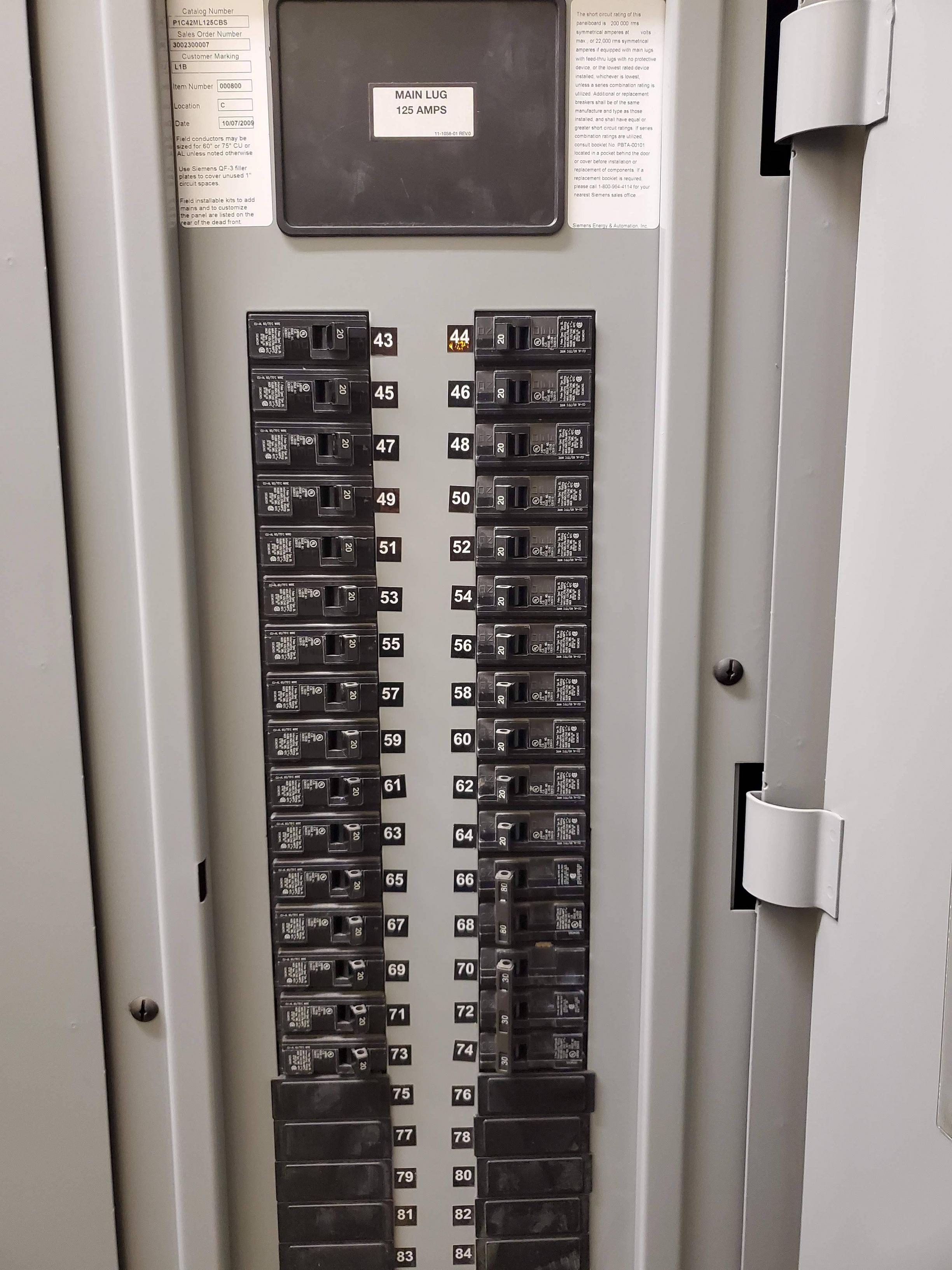Huge problems with this. Gigantic.
If a breaker trips, you'll be backfeeding the tripped circuit.
"What could go wrong?"
So your machine is loaded between circuits A and B, and SNAP! Circuit A breaker trips. Your machine stops working, of course.
But what happens to the other loads on circuit A? They're dead right? No sir, they are not. Power from circuit B is traveling through your machine and ending up on circuit A. Now, it's pulling circuit A's voltage toward circuit B's voltage.
What does this mean for other appliances still plugged into circuit A? Oh, they're getting power alright, from circuit B through your machine. So they're going to power back up, even though one of them just tripped the circuit. But it will be weird, because those appliances (together) will be in series with your machine. So voltage will be rather wack-a-doodle, and that can cause problems for some machines.
You insist that nobody will be affected but you. Except you want to tap a circuit that's shared with your neighbor. Which means not only could they cause the breaker trip, they could be the victim of the above effect.
Current will be traveling in a big circle.
And that's a huge no-no when you are dealing with AC power. That is because AC creates inductive effects - this is the reason transformers work. You are causing high EMFs, which in turn cause vibration, which causes fatigue and arcing failures, and eddy current heating in anything metallic anywhere near the imbalanced wires. And the wires are running through all-metal conduit. That reduces the chances of fire, but wildly increases the eddy-current losses; you're essentially turning the conduit wiring system into a giant electromagnet. That could cause voltage drop at the appliance, which for a switching power supply will cause it to draw even more current. So all of your numbers could be wrong.
These eddy currents/heating/rattling-vibration problems are much worse at higher currents. And you are planning to run this circuit near limits.
Two plugs on the same cable
You're violating the "No cable should have two pointy ends" rule. The reason for that rule is it's possible for one to be plugged in while the other is in your hand. So that means you can get nailed by it, since one prongy end plugged in will make the other prongy end hot. You can trip over a cord and pull it out and have it hit you. Or it can short against equipment, causing arc damage (kind of a big deal in a rental) and potentially starting a fire. There is no (practical) way to make this thing fully de-energize until both plugs are plugged in.
Oh, snap. It's not 220V anyway.
Dude. You're in a large commercial development. You don't have "220V" (actually 240V). You have "190V" (actually 208V) 3-phase. When you figure the additional losses from turning your building into a giant electromagnet, say your practical voltage is 180V.
Now take your "3200W" load. Is that load really 100% power factor? I kinda doubt it. It's probably more like 80% power factor, which means if it's drawing 3200 watts, it's drawing 4000 VA. VA is the number we have to worry about with breakers and provisioning power.
So your 4000VA into 180 useful volts - you are now at 22.22 amps. Whoops-a-daisy. Even if we assume ideal 208V, you're at 19.2 amps. Even a power factor of 95% puts you over 20 amps!
Now, you're not allowed to run circuit at 100% (or 96% as would be the best case here). Your maximum continuous load can only be 80% of circuit capacity - or 16 amps.
Even if the circuit was perfect, even if you had no losses, even if your power factor was 100%, your ideal load at 3200VA/208V = 15.38 amps. Even at 96% power factor you're a tick over the permitted 16A.
In other words, not even close.
But go read your machine's labeling and instructions and see what it says about 208V operation.
You can get a 240V^H^H^H 208V circuit anyway
The thing about this building is, it's a commercial building. It's wired in metal conduit. That means a competent electrician can fish a couple of blue wires through the existing pipe, and hook you up with a 208V dedicated circuit that's all yours. It can be a 20A circuit if your device is able to work on that (given the above provisos), or a 25A or 30A circuit if the numbers show that it needs that.
So the right answer here is to ask management for the service you need. It's not far out of their way.
They even make a "dual voltage" 120V/208V receptacle that can go in any normal (non-GFCI) receptacle location. That will comply with certain Code requirements that require 120V receptacles at a certain spacing.



